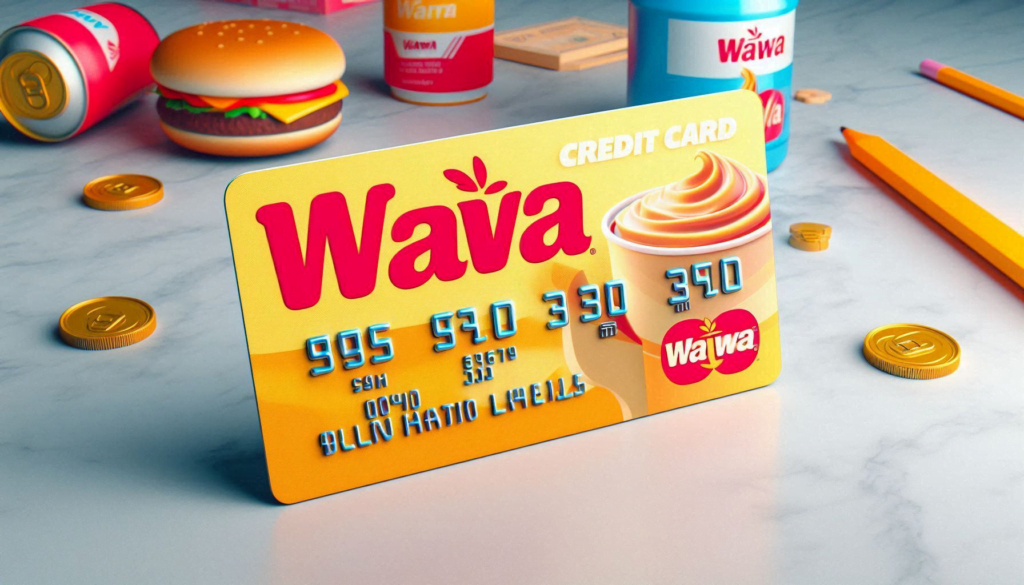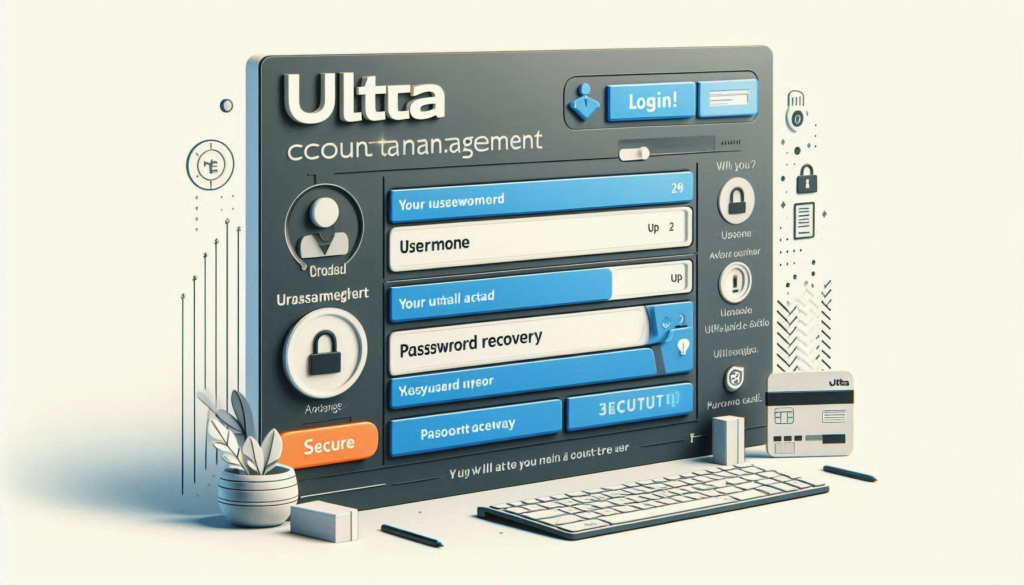In today’s fast-paced world, technology continues to reshape how we manage our finances and daily routines. One area where tech-savvy choices can make a substantial impact is in your grocery shopping. Whether you’re a busy parent, a culinary enthusiast, or simply someone who enjoys finding the best deals, selecting the right credit card can lead to significant savings and added perks. In this “Technology Moment,” we’ll delve into how the latest best credit card for groceries features can optimize your grocery expenses, offering you more value with every trip to the store. From cashback rewards to special discounts and digital tools, discover how you can leverage technology to transform your grocery shopping experience.
Why Choosing the Right Credit Card for Groceries Matters
Grocery shopping is a significant part of our monthly budget. Whether you’re feeding a large family, a couple, or just yourself, the costs can add up quickly. Choosing the right credit card specifically for grocery purchases can make a substantial difference in your finances. The right card can offer you cashback, points, or other rewards that reduce the overall cost of your groceries. Essentially, it’s like getting a discount on every purchase you make.
Moreover, some credit cards come with additional perks such as extended warranties on items you buy, price protection, and even insurance for certain purchases. By strategically using a credit card for your grocery shopping, you’re not just saving money but also adding value through these additional benefits.
Benefits of Using Credit Cards for Grocery Shopping
- Cashback and Rewards: One of the most attractive benefits of using a credit card for groceries is the potential for cashback or rewards points. Many credit cards offer higher cashback percentages or bonus points for grocery store purchases.
- Budgeting and Tracking: Using a credit card makes it easier to track your spending. Most credit card issuers provide detailed statements and spending summaries, which can help you keep an eye on your grocery budget and identify areas where you might be overspending.
- Convenience and Security: Credit cards offer a level of convenience that cash or checks can’t match. With features like contactless payments, you can speed through the checkout process. Additionally, credit cards come with security features such as fraud protection, which can provide peace of mind.
- Introductory Offers and Sign-up Bonuses: Many credit cards offer enticing sign-up bonuses or introductory periods with higher cashback rates on grocery purchases. Taking advantage of these offers can lead to immediate and significant savings.
- Additional Perks: Some credit cards offer extra perks like extended warranties on purchases, price protection, and even travel insurance. These benefits can add value to your card beyond just the rewards you earn from grocery shopping.
Table of Contents
Top Credit Cards for Grocery Shopping
Card 1: XYZ Bank Rewards Card
Overview: The XYZ Bank Rewards Card is a popular choice for those who frequently shop for groceries. Known for its generous rewards program, this card offers great benefits that can make your grocery shopping more rewarding.
Key Benefits:
- High Cash Back Rate: Earn 5% cash back on grocery purchases up to a certain limit each quarter.
- Welcome Bonus: Receive a $200 cash back bonus after spending $1,000 in the first 3 months.
- No Annual Fee: Enjoy all these benefits without having to pay an annual fee.
- Additional Rewards: Earn 1% cash back on all other purchases.
- Introductory APR: Benefit from a 0% introductory APR on purchases and balance transfers for the first 15 months.
Card 2: ABC Credit Union Cash Back Card
Overview: The ABC Credit Union Cash Back Card is ideal for families who spend a significant portion of their budget on groceries. It combines high rewards rates with useful perks, making it a solid choice for everyday spending.
Key Benefits:
- Unlimited Cash Back: Earn 3% unlimited cash back on grocery store purchases without any caps.
- Low Annual Fee: This card comes with a low annual fee of $25, which can be easily offset by the rewards you earn.
- Bonus Categories: Enjoy 2% cash back at gas stations and 1% on all other purchases.
- Customer Service: Access 24/7 customer service and fraud protection.
- Balance Transfer Offer: Take advantage of a low balance transfer fee and competitive APR rates.
Card 3: 123 National Bank Grocery Card
Overview: The 123 National Bank Grocery Card is designed specifically with grocery shoppers in mind. It offers unique features that cater to those who want to maximize their rewards at the supermarket.
Key Benefits:
- Grocery Store Partnerships: Get exclusive discounts and extra rewards points at partner grocery stores.
- High Rewards Rate: Earn 4% cash back on grocery store purchases up to $6,000 per year, then 1% after that.
- Sign-Up Bonus: Receive a $150 bonus after spending $500 in the first 3 months.
- Rotating Categories: Earn 5% cash back in rotating categories each quarter on up to $1,500 in combined purchases.
- Low APR: Enjoy a low variable APR for ongoing purchases and balance transfers.
These top credit cards for grocery shopping each offer unique benefits that cater to different needs and spending habits. Whether you’re looking for high cash back rates, low fees, or special grocery store partnerships, there’s a card out there that can help you save more on your grocery bills.
Understanding Grocery Rewards Programs
When it comes to maximizing your savings and getting the most out of your grocery shopping, understanding grocery rewards programs is crucial. These programs are designed to give you incentives, such as cash back, points, or miles, for using your credit card to purchase groceries. Let’s break down the essential aspects of grocery rewards programs.

Types of Rewards Programs
- Cash Back Programs
- How They Work: With cash back programs, you earn a percentage of your purchase amount back as a rebate. For instance, if you have a card that offers 3% cash back on groceries and you spend $100, you’ll receive $3 back.
- Pros: Simple and straightforward. You get tangible savings that can often be applied as a statement credit or deposited into your bank account.
- Cons: The rewards might have caps, such as a maximum of $500 in purchases per quarter that qualify for the highest cash back rate.
- Points-Based Programs
- How They Work: These programs award points for every dollar you spend. For example, you might earn 2 points per dollar spent on groceries. These points can then be redeemed for various rewards, such as travel, gift cards, or merchandise.
- Pros: Flexibility in redemption options. Points can sometimes be worth more when redeemed through the card issuer’s travel portal or for certain types of rewards.
- Cons: The value of points can vary, and the redemption process might be more complicated compared to cash back.
- Miles-Based Programs
- How They Work: Similar to points programs, miles-based rewards give you a certain number of miles for every dollar spent on groceries. These miles are typically used for travel-related rewards, such as flights or hotel stays.
- Pros: Can be highly valuable for frequent travelers. Some cards offer bonuses or multipliers when redeeming miles through specific travel partners.
- Cons: Limited to travel-related redemptions, which might not be beneficial for everyone. The value of miles can fluctuate based on airline policies and redemption availability.
How Rewards are Calculated
- Base Rate vs. Bonus Rate
- Base Rate: This is the standard rate at which you earn rewards on all purchases. For instance, a card might offer 1% cash back on all purchases.
- Bonus Rate: This is a higher rate offered on specific categories, such as groceries. A card might offer 3% cash back on grocery purchases, which is the bonus rate.
- Caps and Limits
- Some cards have caps on the amount of purchases that can earn rewards at the bonus rate. For example, you might earn 3% cash back on groceries up to $6,000 per year, after which the rate drops to the base rate.
- It’s essential to be aware of these caps to maximize your rewards. If you frequently spend more than the cap, you might need to consider multiple cards or other strategies.
- Earning and Redemption Thresholds
- Some cards require you to reach a minimum amount of rewards before you can redeem them. For example, you might need to earn $25 in cash back before you can apply it to your statement.
- Understanding these thresholds helps you plan your spending and redemption strategy more effectively.
- Introductory and Promotional Offers
- Many credit cards offer attractive introductory rewards, such as a sign-up bonus or a higher cash back rate for the first few months. For example, a card might offer 5% cash back on groceries for the first six months.
- These promotions can significantly boost your rewards, but it’s important to know when they expire and what the rates will revert to afterward.
Comparing the Top Cards
When it comes to choosing the best credit card for groceries, it’s essential to compare the top contenders based on various factors. This will help you understand which card offers the most value based on your shopping habits and financial goals. Here, we’ll delve into several key aspects to consider when comparing grocery credit cards:
Rewards Rates
One of the most critical factors to examine is the rewards rate each card offers on grocery purchases. This rate determines how much you’ll earn back for every dollar spent at grocery stores.
- XYZ Bank Rewards Card: Offers 5% cash back on grocery purchases, making it one of the highest rates available. This card also provides a 1% reward on all other purchases.
- ABC Credit Union Cash Back Card: Provides 3% cash back on groceries and 2% on dining, with 1% on all other purchases.
- 123 National Bank Grocery Card: Offers a 4% cash back rate on grocery purchases, 2% on fuel, and 1% on everything else.
Annual Fees
Annual fees can significantly impact the overall value you get from a credit card. It’s important to weigh the annual fee against the rewards you expect to earn.
- XYZ Bank Rewards Card: Has an annual fee of $95. However, the high rewards rate on groceries can quickly offset this cost if you spend a lot on groceries.
- ABC Credit Union Cash Back Card: No annual fee, making it an attractive option for those who prefer to avoid extra costs.
- 123 National Bank Grocery Card: Charges a $50 annual fee, which is lower than the XYZ Bank card but higher than the ABC Credit Union card.
Sign-Up Bonuses
Many credit cards offer sign-up bonuses to attract new customers. These bonuses can provide a substantial boost in rewards, especially in the first few months.
- XYZ Bank Rewards Card: Offers a $200 sign-up bonus if you spend $1,000 within the first three months.
- ABC Credit Union Cash Back Card: Provides a $150 sign-up bonus after spending $500 in the first three months.
- 123 National Bank Grocery Card: Features a $250 sign-up bonus for spending $2,000 in the first three months.
Additional Perks
Beyond rewards rates and fees, additional perks can make a significant difference in the value a credit card offers. These perks might include travel benefits, purchase protections, and customer service quality.
- XYZ Bank Rewards Card: Includes travel insurance, extended warranties on purchases, and access to a 24/7 concierge service.
- ABC Credit Union Cash Back Card: Offers purchase protection, zero liability on unauthorized charges, and a user-friendly mobile app.
- 123 National Bank Grocery Card: Provides price protection, rental car insurance, and fraud alerts.
Foreign Transaction Fees
If you travel frequently or make purchases from international retailers, foreign transaction fees can add up quickly.
- XYZ Bank Rewards Card: Charges a 3% foreign transaction fee.
- ABC Credit Union Cash Back Card: No foreign transaction fees, making it ideal for international use.
- 123 National Bank Grocery Card: Charges a 2% foreign transaction fee.
Redemption Options
The flexibility and ease of redeeming your rewards can also influence your choice. Some cards offer more redemption options than others, such as cash back, travel credits, or gift cards.
- XYZ Bank Rewards Card: Allows rewards to be redeemed for cash back, travel, gift cards, and merchandise.
- ABC Credit Union Cash Back Card: Primarily offers cash back, which can be applied as a statement credit or deposited into your bank account.
- 123 National Bank Grocery Card: Provides options for cash back, travel credits, and gift cards.
Customer Service and Support
Finally, the quality of customer service can make a significant difference in your overall experience with a credit card.
- XYZ Bank Rewards Card: Known for excellent customer service, including 24/7 support and a comprehensive online help center.
- ABC Credit Union Cash Back Card: Offers reliable customer service with extended hours and responsive online chat support.
- 123 National Bank Grocery Card: Provides decent customer service with standard business hours and email support.
By comparing these factors, you can determine which credit card best suits your grocery shopping needs and overall financial goals. Each card has its strengths and weaknesses, so it’s essential to consider what aspects are most important to you before making a decision.
Things to Take Into Account Before Selecting a Grocery Credit Card
When you’re on the hunt for the best credit card for groceries, there are several important factors to consider. Each of these can significantly impact how much value you get from your card. Let’s dive into the key aspects to keep in mind:
1. Rewards Rate: The rewards rate is arguably the most critical factor. This determines how much cashback or how many points you earn per dollar spent on groceries. For instance, some cards might offer 3% cashback on grocery purchases, while others could provide 5 points per dollar spent. Higher rewards rates mean more significant savings or more points to redeem for other perks.
2. Annual Fees: Annual fees can eat into your rewards if they are too high relative to your spending. Some grocery credit cards come with no annual fee, making them very attractive if you want to maximize savings. Others might have an annual fee but offer higher rewards or additional benefits that can justify the cost if you spend a lot on groceries.
3. Grocery Store Eligibility: Not all grocery rewards cards treat every store equally. Some cards may limit higher rewards rates to specific chains or exclude certain types of stores like big-box retailers or warehouse clubs. Make sure the card you choose aligns with where you do most of your grocery shopping.
4. Additional Rewards Categories: While grocery rewards are essential, it’s beneficial to consider what other spending categories the card rewards. Some cards might also offer high rewards rates on dining, gas, or online purchases. This can provide more value if you frequently spend in these other categories as well.
5. Introductory Offers: Many credit cards offer attractive sign-up bonuses or introductory offers to new cardholders. These might include extra points, higher cashback rates for the first few months, or waived annual fees for the first year. These offers can provide significant initial value but make sure the card remains beneficial after the introductory period ends.
6. Redemption Options: The flexibility of how you can use your rewards is another vital factor. Some cards might limit you to redeeming rewards for statement credits, while others offer various options like travel, gift cards, or merchandise. Look for a card that aligns with how you prefer to use your rewards.
7. Foreign Transaction Fees: If you travel abroad or make purchases from international retailers, foreign transaction fees can add up. Some cards waive these fees, which can be a significant benefit if you shop internationally.
8. Interest Rates: While it’s generally best to pay off your credit card balance in full each month to avoid interest charges, it’s still wise to consider the card’s interest rate (APR). If you ever need to carry a balance, a lower interest rate will reduce the cost of doing so.
9. Customer Service and Support: A card issuer with strong customer service can make managing your account much easier. Look for cards from issuers known for responsive and helpful customer support.
10. Additional Perks and Protections: Beyond rewards, some credit cards offer additional benefits such as purchase protection, extended warranties, price protection, and travel insurance. These perks can add extra value to the card and provide peace of mind.
Maximizing Your Grocery Rewards
When it comes to maximizing your grocery rewards, it’s not just about choosing the right credit card. It also involves a strategic approach to how and when you use your card. Here are some detailed tips to help you get the most out of your grocery rewards program:
1. Choose the Right Card: Selecting the best credit card for groceries is the first step. Look for cards that offer high rewards rates on grocery purchases. Cards that offer 3% to 6% cash back on groceries are ideal. Review the terms and conditions to ensure your favorite grocery stores are included in the reward category.
2. Understand the Rewards Structure: Different cards have different rewards structures. Some offer flat-rate rewards on all purchases, while others offer higher rates on specific categories like groceries. Be aware of any spending caps that may limit the amount of rewards you can earn in a given period. For example, some cards might offer 5% cash back on groceries up to $6,000 per year, and 1% thereafter.
3. Time Your Purchases: Take advantage of any promotional periods or bonus offers. Some credit cards have rotating categories that offer higher rewards rates during certain months. Plan your larger grocery shopping trips during these periods to maximize your rewards.
4. Combine with Store Loyalty Programs: Many grocery stores have their own loyalty programs that offer additional discounts and rewards. Combine these with your credit card rewards to double-dip on savings. For example, if your grocery store offers 5% off for loyalty members, and your credit card offers 5% cash back, you’re effectively saving 10%.
5. Use Your Card for All Grocery-Related Purchases: Don’t limit your use of the credit card to just food items. Include other grocery store purchases like cleaning supplies, toiletries, and even gift cards for other retailers. These often qualify for grocery rewards too, boosting your earnings.
6. Pay Attention to Annual Fees: While a card with no annual fee might seem appealing, don’t dismiss cards with an annual fee outright. Often, the higher rewards rates and additional perks (like travel credits or extended warranties) can more than offset the annual fee if you spend enough on groceries.
7. Redeem Rewards Wisely: Understand how to redeem your rewards to get the most value. Some cards offer higher redemption value when used for travel or through the issuer’s shopping portal. Others might have the best value when you opt for statement credits or direct deposit to your bank account.
8. Monitor and Track Your Rewards: Keep track of your rewards earnings and expiration dates. Some rewards expire if not used within a certain timeframe. Use apps or the card issuer’s online portal to monitor your rewards balance and ensure you redeem them before they expire.
9. Avoid Interest and Fees: To truly maximize your rewards, avoid carrying a balance on your credit card. Interest charges can quickly negate any rewards earned. Pay your balance in full each month to ensure you’re gaining the full benefit of your rewards program.
10. Stay Informed About Changes: Credit card issuers can change their rewards programs, terms, and conditions. Stay informed by regularly reviewing your cardholder agreement and any notices from your issuer. This way, you can adjust your strategy if needed to continue maximizing your rewards.
Common Pitfalls to Avoid
When selecting and using a credit card for grocery purchases, there are several common pitfalls that you should be aware of to ensure you maximize your benefits and avoid unnecessary costs. Let’s dive into these potential mistakes and how to steer clear of them:
- Ignoring the Fine Print
- Promotional Rates: Some credit cards offer promotional interest rates or rewards that change after a few months. Always check how long the promotional period lasts and what the rates or rewards will be afterward.
- Spending Caps: Many rewards cards have spending caps on their high-reward categories. For example, you might earn 5% cash back on groceries but only up to $1,500 in spending per quarter. After that, the rewards rate might drop significantly.
- Eligible Purchases: Not all grocery purchases may qualify for the highest rewards rate. Some cards exclude certain stores or types of purchases, like warehouse clubs or superstores. Make sure your regular grocery store is eligible.
- Overlooking Annual Fees
- Cost vs. Benefit: A card with an annual fee might offer higher rewards, but you need to calculate if the rewards you’ll earn outweigh the fee. If you don’t spend enough on groceries, a no-annual-fee card might be more beneficial.
- Promotional Waivers: Some cards waive the annual fee for the first year. Be prepared for the fee to kick in after that period and determine if the card is still worth it.
- Missing Out on Signup Bonuses
- Minimum Spending Requirements: Many credit cards offer lucrative signup bonuses, but you usually have to meet a minimum spending requirement within the first few months. Plan your spending to ensure you hit this target without overspending.
- Bonus Categories: Make sure the spending required to earn the signup bonus can be achieved with your regular expenses. If you have to spend in categories you don’t usually shop in, it might not be worth it.
- Not Paying Off the Balance Monthly
- Interest Rates: The rewards you earn can quickly be negated by high-interest charges if you carry a balance. Aim to pay off your credit card in full each month to avoid interest and make the most of your rewards.
- Credit Utilization: High balances relative to your credit limit can negatively impact your credit score. Keep your utilization rate low by paying off your card regularly.
- Neglecting Reward Redemption Options
- Flexibility: Ensure the rewards you earn can be redeemed in ways that are useful to you, whether as cash back, statement credits, or points transferable to travel partners.
- Expiration Dates: Rewards points or cash back can sometimes expire if not used within a certain timeframe.
- Failing to Monitor Spending and Rewards
- Tracking: Use your card’s online tools or apps to monitor your spending and ensure you’re on track to maximize your rewards. Some cards even offer alerts and budgeting tools.
- Fraud Alerts: Regularly review your statements for unauthorized charges. Many cards offer fraud protection, but it’s up to you to report suspicious activity promptly.
- Overestimating Reward Value
- Actual Savings: Sometimes the perceived value of rewards can be inflated. Calculate the actual dollar value of the rewards compared to potential savings or benefits from other cards.
- Inflated Spending: Don’t fall into the trap of spending more than usual just to earn rewards. Stick to your budget and spending habits to truly benefit from the rewards.
Case Studies: Real-Life Examples
Case Study 1: Jane’s Journey to Maximizing Grocery Rewards
Background: Jane is a busy mother of three who shops for groceries weekly. She was using a basic credit card with minimal rewards until she discovered the benefits of a grocery rewards credit card.
Card Chosen: XYZ Bank Rewards Card
Implementation: Jane switched to the XYZ Bank Rewards Card, which offers 4% cash back on groceries. She spends approximately $200 per week on groceries, which translates to about $800 per month.
Outcome: In her first month, Jane earned $32 in cash back (4% of $800). Over a year, this amounts to $384. She also took advantage of the card’s other perks, like no annual fee and an introductory 0% APR for 12 months, which helped her manage her budget more effectively.
Conclusion: By switching to a grocery rewards card, Jane significantly increased her cash back earnings, which she used to offset other household expenses.
Case Study 2: Mike’s Smart Use of Grocery and Gas Rewards
Background: Mike is a single professional who drives a lot for work and spends a substantial amount on both groceries and gas. He wanted a card that could reward him for both types of spending.
Card Chosen: ABC Credit Union Cash Back Card
Implementation: Mike opted for the ABC Credit Union Cash Back Card, which offers 3% cash back on groceries and 2% on gas. He spends around $400 per month on groceries and $150 on gas.
Outcome: Mike earns $12 per month on groceries (3% of $400) and $3 on gas (2% of $150). This totals $15 per month or $180 per year. Additionally, the card offers a 1% cash back on all other purchases, which adds up to extra savings on his other expenditures.
Conclusion: Mike’s strategic choice of a cash back card that rewards both grocery and gas purchases maximizes his rewards and fits his lifestyle perfectly.
Case Study 3: Sarah’s Strategic Use of Rotating Category Rewards
Background: Sarah is a savvy shopper who likes to take advantage of rotating category rewards. She wanted a card that would allow her to earn higher rewards on groceries during certain months.
Card Chosen: 123 National Bank Grocery Card
Implementation: Sarah chose the 123 National Bank Grocery Card, which offers 5% cash back on groceries during the first quarter of the year and 1% for the rest of the year. She spends about $300 per month on groceries.
Outcome: During the first quarter, Sarah earns $15 per month (5% of $300), totaling $45. For the remaining nine months, she earns $3 per month (1% of $300), totaling $27. Her annual cash back from groceries alone is $72.
Conclusion: By strategically using a card with rotating category rewards, Sarah maximizes her cash back during high-reward periods and still benefits throughout the year.
Key Takeaways:
- Jane optimized her grocery spending by switching to a high cash back card, significantly increasing her savings.
- Mike balanced his rewards across groceries and gas, making his card choice highly effective for his lifestyle.
- Sarah took advantage of rotating category rewards, demonstrating how timing and card choice can enhance benefits.
These real-life examples highlight how different credit cards can be tailored to individual spending habits, leading to substantial savings and rewards. By understanding and applying these strategies, consumers can make informed decisions and maximize their benefits from grocery rewards credit cards.
How to Apply for a Credit Card to Buy Groceries
Applying for a grocery credit card is a straightforward process, but understanding each step can help you secure the best card for your needs and ensure you make the most out of the benefits.

1. Research and Compare Cards
Before applying, it’s essential to research and compare different grocery credit cards. Look for cards that offer the best rewards, cash back, or discounts on grocery purchases. Consider factors such as:
- Reward Rates: How much cash back or points you earn per dollar spent on groceries.
- Sign-Up Bonuses: Initial rewards or bonuses for new cardholders.
- Annual Fees: Some cards have fees that might offset the rewards you earn.
- Additional Perks: Look for benefits like extended warranties, purchase protection, or travel insurance.
Websites like NerdWallet, Credit Karma, and others can provide detailed comparisons and reviews to help you make an informed decision.
2. Check Your Credit Score
Most grocery credit cards require a good to excellent credit score. Here’s how to check and improve your credit score if needed:
- Obtain a Free Credit Report: Use services like AnnualCreditReport.com to get your free credit report and review your credit history.
- Check Your Score: Many financial institutions and credit card issuers offer free credit score checks for their customers.
- Improve Your Score: Pay off outstanding debts, reduce credit card balances, and ensure you make timely payments to boost your score if necessary.
3. Gather Necessary Documentation
When applying for a credit card, you’ll need to provide certain information. Be prepared with the following:
- Personal Information: Full name, address, date of birth, and Social Security number.
- Employment Details: Employer’s name, your job title, and your annual income.
- Financial Information: Details of your assets, liabilities, and any other sources of income.
Having these documents ready can speed up the application process and ensure accuracy.
4. Complete the Application
You can apply for a grocery credit card either online or by mail. Most applications are completed online for convenience. Here’s how to do it:
- Visit the Card Issuer’s Website: Go to the website of the credit card issuer you’re interested in.
- Fill Out the Application Form: Enter your personal, financial, and employment details as requested.
- Submit Documentation: Upload any required documents if applying online, or send them via mail if applying through traditional means.
5. Await Approval
After submitting your application, you’ll receive a response from the credit card issuer. This could be immediate or take a few days, depending on the issuer’s process. If approved:
- Receive Your Card: You’ll get your new credit card in the mail, usually within 7-10 business days.
- Activate Your Card: This usually involves calling a phone number or logging into your online account.
6. Review the Terms and Benefits
Once your card is activated, familiarize yourself with its terms and benefits:
- Understand the Reward Program: Review how rewards are earned and redeemed.
- Read the Fine Print: Check for any fees, interest rates, and terms associated with the card.
- Set Up Alerts: Consider setting up alerts for due dates and spending limits to manage your card effectively.
7. Start Using Your Card
Begin using your new grocery credit card for eligible purchases to maximize your rewards. Keep track of your spending and rewards to ensure you’re getting the most value from your card.
Frequently Asked Questions (FAQ)
What should I look for in a credit card for groceries?
When choosing a credit card specifically for grocery shopping, look for several key features:
- Rewards Rate: The percentage of cash back or points you earn on grocery purchases. Some cards offer higher rewards rates for grocery stores.
- Sign-Up Bonus: Many cards offer a bonus when you meet a certain spending threshold within the first few months.
- Annual Fee: Consider whether the rewards and benefits outweigh the cost of the fee.
- Foreign Transaction Fees: If you travel internationally, check if the card charges foreign transaction fees.
- Additional Benefits: Look for perks like extended warranties, purchase protection, or access to discounts and deals.
Are there credit cards that offer higher rewards for specific grocery stores?
Yes, some credit cards offer higher rewards for purchases made at specific grocery store chains. These are often store-branded credit cards or co-branded cards that partner with major grocery chains. For instance, a card might offer 3% cash back at stores like Kroger or Safeway, but only 1% elsewhere. If you frequently shop at a specific store, a store-specific card could be more beneficial.
Can I use a credit card for online grocery shopping?
Absolutely! Many credit cards offer rewards for online grocery purchases just as they do for in-store transactions. When shopping online, make sure to check if the online store is eligible for the rewards or cash back rates that the card offers. Also, be mindful of any special promotions or partnerships the card might have with online grocery retailers.
How do I maximize my rewards with a grocery credit card?
To maximize rewards with a grocery credit card:
- Use the Card for All Grocery Purchases: Ensure you use the card for every grocery purchase to earn the maximum rewards.
- Stay Informed About Bonus Categories: Some cards offer rotating bonus categories or special promotions. Keep track of these to maximize rewards.
- Combine with Other Offers: Look for opportunities to stack rewards with store promotions, coupons, or loyalty programs.
- Pay Off Balances Regularly: Avoid interest charges by paying off your balance in full each month. This way, you keep more of your rewards.
Are there any drawbacks to using a credit card for groceries?
While credit cards offer many benefits, there are a few potential drawbacks:
- Interest Rates: If you carry a balance, the interest charges can outweigh the rewards earned. Always aim to pay your balance in full to avoid this.
- Fees: Some cards have annual fees or foreign transaction fees that might reduce the overall value of the rewards.
- Spending Discipline: Using a credit card can sometimes lead to overspending. It’s important to budget and track your expenses to avoid this pitfall.





